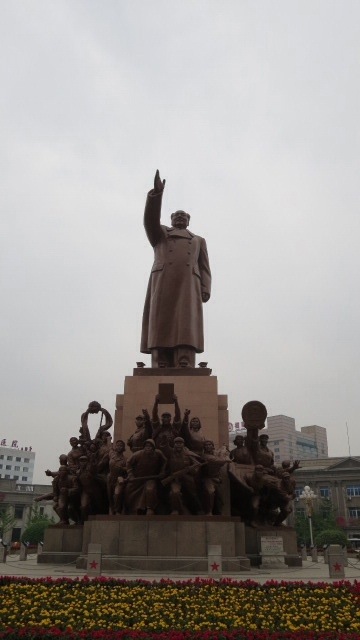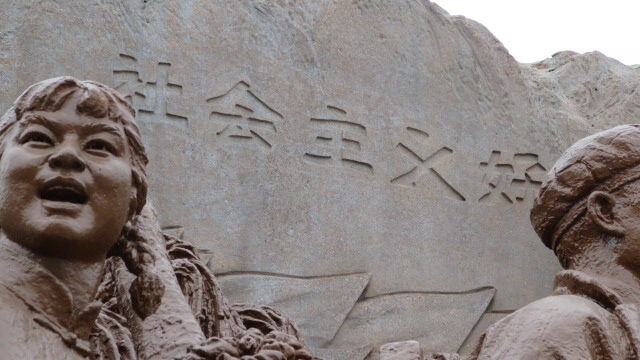Chinese Hagiography
Near to where I live is a very large sculpture honoring Mao Zedong. It’s an interesting example of modern hagiography, in which the leader is presented as a saintly, messianic figure.
You can read more details about the sculpture in this Wikipedia article
Surrounding the standing figure of Mao are figures of people who are enthusiastically moving forward:
The book that the central figure holds is the “Collected Works of Mao Zedong:”
The sculpture is very militaristic, showing the people fighting for the revolution:
Slogans are carved into the pedestal. This one reads: “Long Live the Unity of All the People in the World.”
“Socialism is Good!”
This book was a mystery to me. It reads “Angang Constitution.”
I had to do some research to understand what Angang is. According to this blog post, after WWII, the Shenyang area’s steel production facilities were devastated by the war. Under the leadership of Meng Tai, the facilities at Anshan Steel were restored, and production of steel was resumed, which facilitated further industrialization of China. Mao was so impressed with Meng’s leadership style that he designated it as the Angang Constitution. Hence the inscription on the book. “Angang” is the abbreviation of “Anshan Gangtie (éžå±±é‹¼éµ),” or “Anshan Steel.”
The inscription on the sculpture reads that it was presented by the Revolutionary Committee of Liaoling Province, the Revolutionary Committee of Shenyang City, the soldiers and officers of the Shenyang division of the People’s Libration Army, and it’s dated October, 1969. The country was in the middle of the Cultural Revolution at that time, so in that context, the militaristic flavor of the sculpture makes sense.











